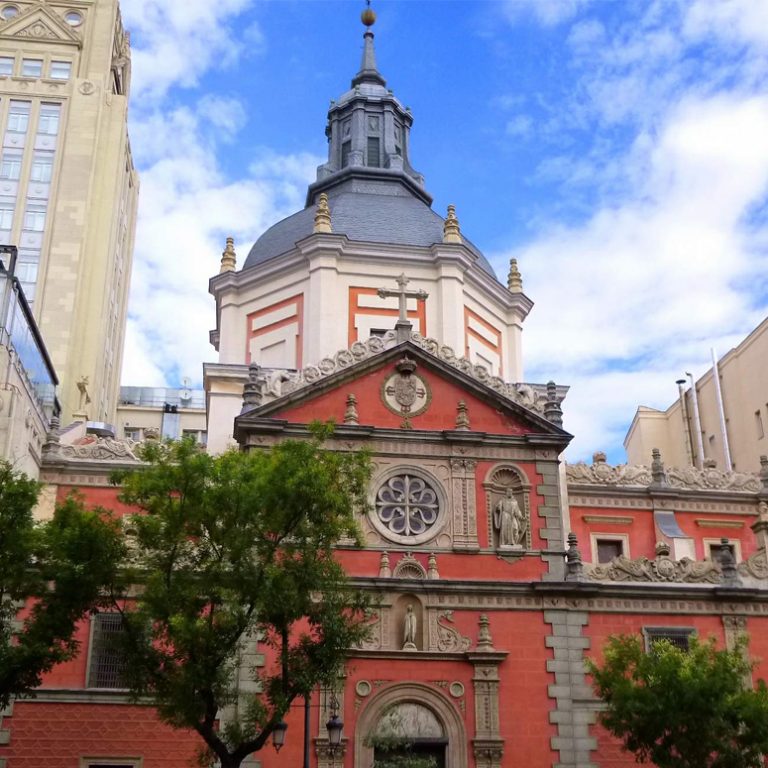
The Church of Las Calatravas, in Madrid, showcases remarkable Baroque architecture. It was built between the 17th and 18th centuries and is considered one of the finest examples of Baroque religious architecture in the city.
The church's facade features a symmetrical and balanced structure, with a large central door flanked by columns and topped by a pediment. Baroque decoration can be observed in ornamental details such as pilasters, niches with sculptures, and relief decorative elements.
The interior of the church boasts a spacious and tall central nave, with side chapels housing Baroque altarpieces and artworks. The ornamentation includes elements like decorated vaults, Solomonic columns, frescoes on the domes, and sculptures.
The architecture of the Church of Las Calatravas stands out for its decorative richness, the use of sculptural elements, and the careful arrangement of Baroque architectural details. It is an impressive example of the architectural legacy of the time in Madrid. Viewed from the outside, the octagonal dome is covered with naturpiedra Phyllite, whose dark color contrasts with the facade and gives the building a sober and elegant appearance. The contrast between the Baroque ornamentation and the dark, uniform color of the slate creates a striking visual effect and highlights the beauty of the church's architecture.
Although it once dominated the skyline of Calle de Alcalá for centuries, in the 20th century, it became overshadowed and hidden by the modern buildings that have been constructed around it.
Having been converted from a convent church into a parish, fate allowed it to not suffer too much from the upheavals of the Civil War, preserving its interior almost intact. However, the lack of maintenance and institutional neglect led the monument to a state of serious deterioration during the last decades of the 20th century. Finally, at the beginning of the 21st century, an ambitious program was undertaken, which included intervention in both the external part of the building (roof remodeling, facade cleaning, and recovery of the original plaster) and the interior, which was completely restored.